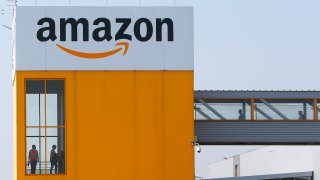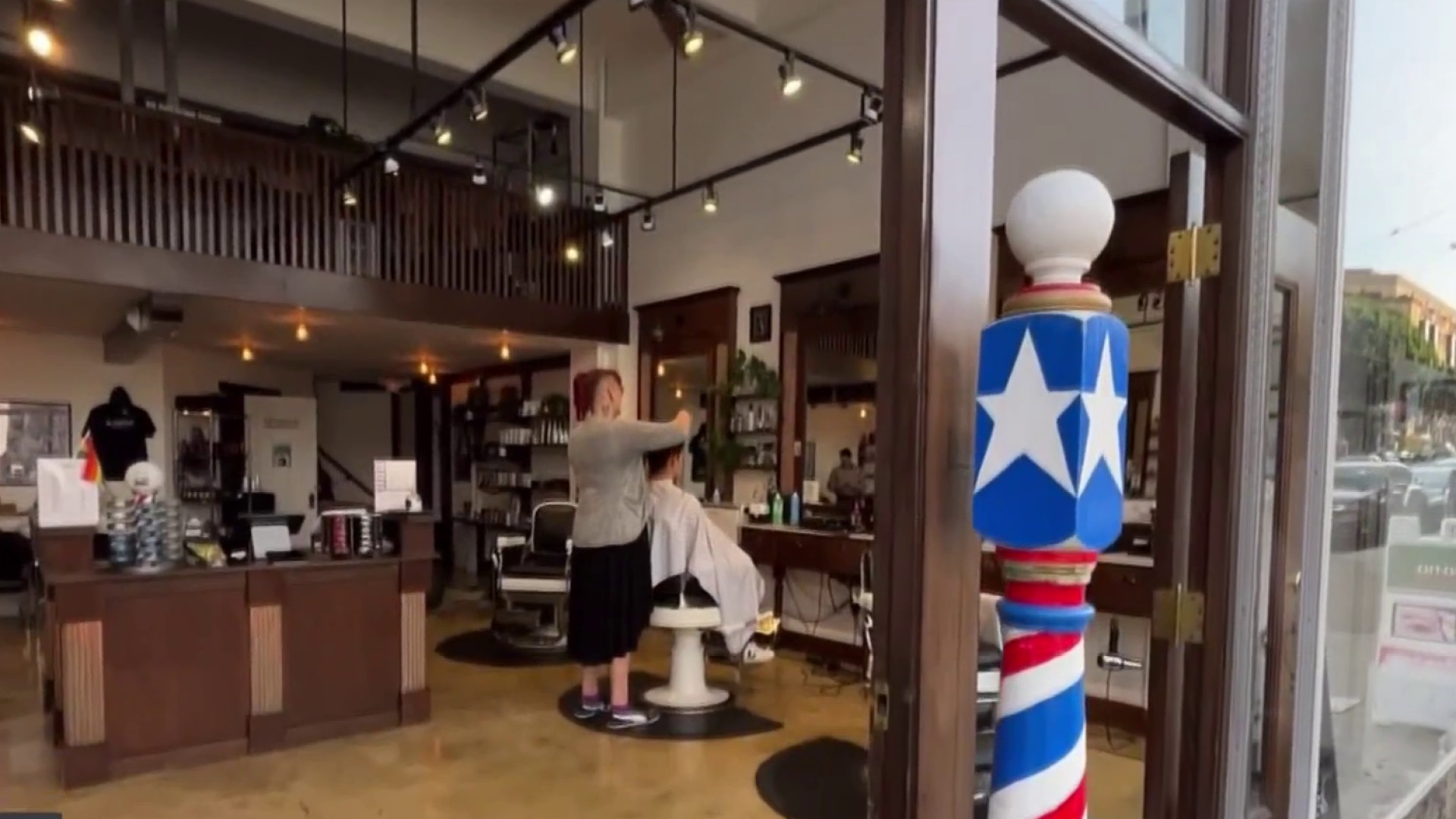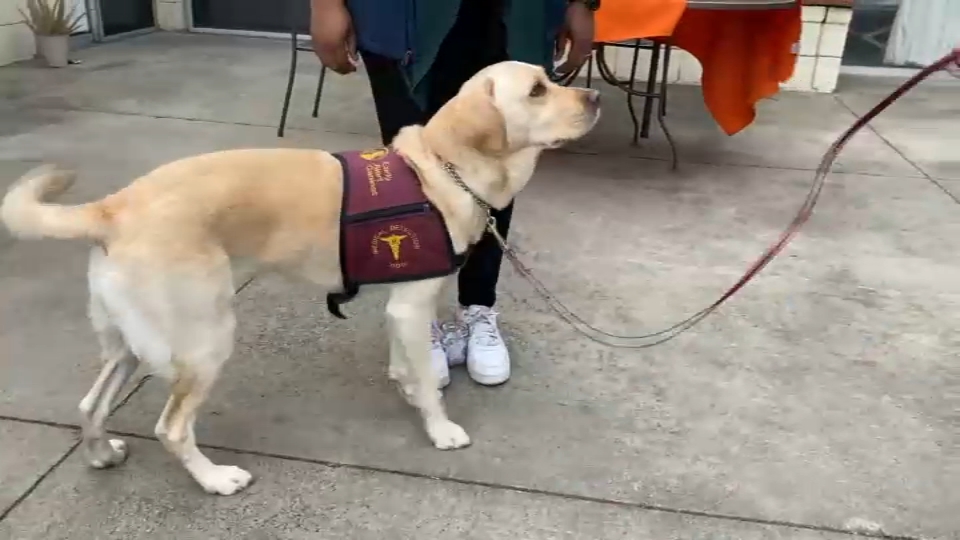
Jordan Flowers never thought he would become a labor leader. Then the coronavirus forced him to risk his life every time he clocked in.
The robotics operator at Amazon’s Staten Island warehouse helped lead one of the first walkouts at the site — a protest over the company's lack of protective equipment. A month later, even after Amazon scrambled to provide masks and gloves and check employees’ temperatures, workers continue conducting scattered walkouts to protest what they say are still-risky conditions in warehouses where workers have had the virus.
"You risk your life putting in 10 hours every day," said Flowers, 21, who has an autoimmune disease and is at heightened risk for infection. "You're surrounded, and you don't know who has it or who touched what to pass it on."
Across the country, the unexpected front-line workers of the pandemic — grocery store workers, Instacart shoppers and Uber drivers, among them — are taking action to protect themselves. Rolling job actions have raced through what's left of the economy, including Pittsburgh sanitation workers who walked off their jobs in the first weeks of lockdown and dozens of fast-food workers in California who left restaurants last week to perform socially distant protests in their cars.
Get a weekly recap of the latest San Francisco Bay Area housing news. Sign up for NBC Bay Area’s Housing Deconstructed newsletter.
To labor activists and historians, the often-spontaneous job actions echo other moments in the labor movement when alarm about worker safety and public health spurred organizing and reforms in meatpacking plants, New York's garment factories or coal mines.
"People's fears of sickness and death are finally stronger than people's fears of their employer," said Daniel Graff, a labor historian at Notre Dame University. "It might be a sort of cataclysmic opening."
Labor faces plenty of other hurdles. One involves logistical barriers — organizing generally needs to happen via text or Zoom in the era of social distancing. Workplace protests tend to happen in cars, and labor is operating under the hostile eye of the Trump administration.
Coronavirus Pandemic
Full coverage of the COVID-19 outbreak and how it impacts you
Basic economics also pose a challenge. Unions typically have more power in times of low unemployment, when it’s easier for unhappy workers — or striking ones — to find another job. The U.S. unemployment rate is projected to hit 20% soon, a level not seen since the Great Depression.
In the scramble to adjust to the outbreak, some companies that are part of the "essential" economy are rushing to hire new workers, which may temporarily give current staff some bargaining power. But many economists project more than a year of widespread joblessness, said Jed Kolko, an economist at Indeed.
High unemployment and the end of a tight labor market create "the headwind for more worker power," Kolko said.
Even without that headwind, the labor movement has withered in past decades as employers found new ways to fend off unions. Republican presidents stocked the National Labor Relations Board with members unsympathetic to labor, and the economy became dominated by large companies that are harder to organize and have an increasing array of tools to keep unions at bay. So-called "right to work" laws that allow workers to opt out of paying union dues have proliferated in more than half the states.
Unions have tried to adapt, targeting some of the biggest employers like Walmart and Amazon with new organizing strategies.
Amazon says it has made more than 150 safety updates to guard against the coronavirus, including enhanced cleaning, disinfectant spraying and providing masks.
"We encourage anyone interested in the facts to compare our overall pay and benefits, as well as our speed in managing this crisis, to other retailers and major employers across the country," the company said in a statement.
Only 10.7% of U.S. workers are union members, and they tend to be in the public sector, like teachers or police officers. In the private sector, unions tend toward older-line jobs like utility workers. Only about 1% of restaurant workers are in a union.
Led by the Service Employees International Union, labor has also targeted the fast-food industry seeking not only to gain new members but to force industry-wide concessions that could help all workers, rather than just those who pay dues, such as the Fight for $15 campaign to raise the minimum wage.
Efforts like that may contribute to the increasingly positive image of labor — according to Gallup, nearly two-thirds of Americans had a favorable view of unions last year, the highest since 1999. MIT researchers in 2017 found that 48% of non-unionized workers would join a union if they could.
The battle at McDonald's has shifted from the minimum wage to hand sanitizer.
Laura Pozas, a McDonald's worker in Oakland, California, joined the occasional brief walkout to push for a higher wage and other improvements last year. Now she is on her second week of striking to demand safer conditions at her restaurant. The walkout began after one of the workers she spent the day elbow-to-elbow with in the cramped kitchen was diagnosed with coronavirus. That woman is now on a ventilator.
"It's more important now," Pozas, 57, said of her labor activism. "We are so scared ... At least give us security."
Last week, McDonald’s U.S. president, Joe Erlinger, said the company was requiring franchisees to provide masks and gloves and conduct temperature checks when workers arrive for their shifts. Those changes will roll out to all U.S. restaurants in the coming weeks, he said.
SEIU President Mary Kay Henry said fighting for masks is just a logical extension of other labor struggles.
"Every one of these workers thinks of this moment as ‘We can’t go back to the way things were before the pandemic,'" Henry said in an interview.
Some unions have been able to flex their muscle during the pandemic. Nurses unions have helped hospitals secure masks, gloves and gowns for their workers. Ford, General Motors and Fiat Chrysler closed their U.S. plants on March 18 under pressure from the United Auto Workers union. Those plants remain closed.
"I have said for some time that the only litmus test in reopening the economy is whether you would send your son or daughter into the workplace," UAW President Rory Gamble said last week.
Still, other powerful unions have been decimated by mass layoffs. UNITE HERE, which represented 300,000 largely hotel and restaurant workers, said 98% of its members have been laid off. The union has been raising money to help members pay bills, coordinating food banks and pushing Congress to extend health care for laid-off workers.
Nonetheless, the union known for its aggressive tactics is also making plans for when life someday returns to normal.
In the long term, spokeswoman Meghan Cohorst said, "we're still going to have to organize and go into new industries."



